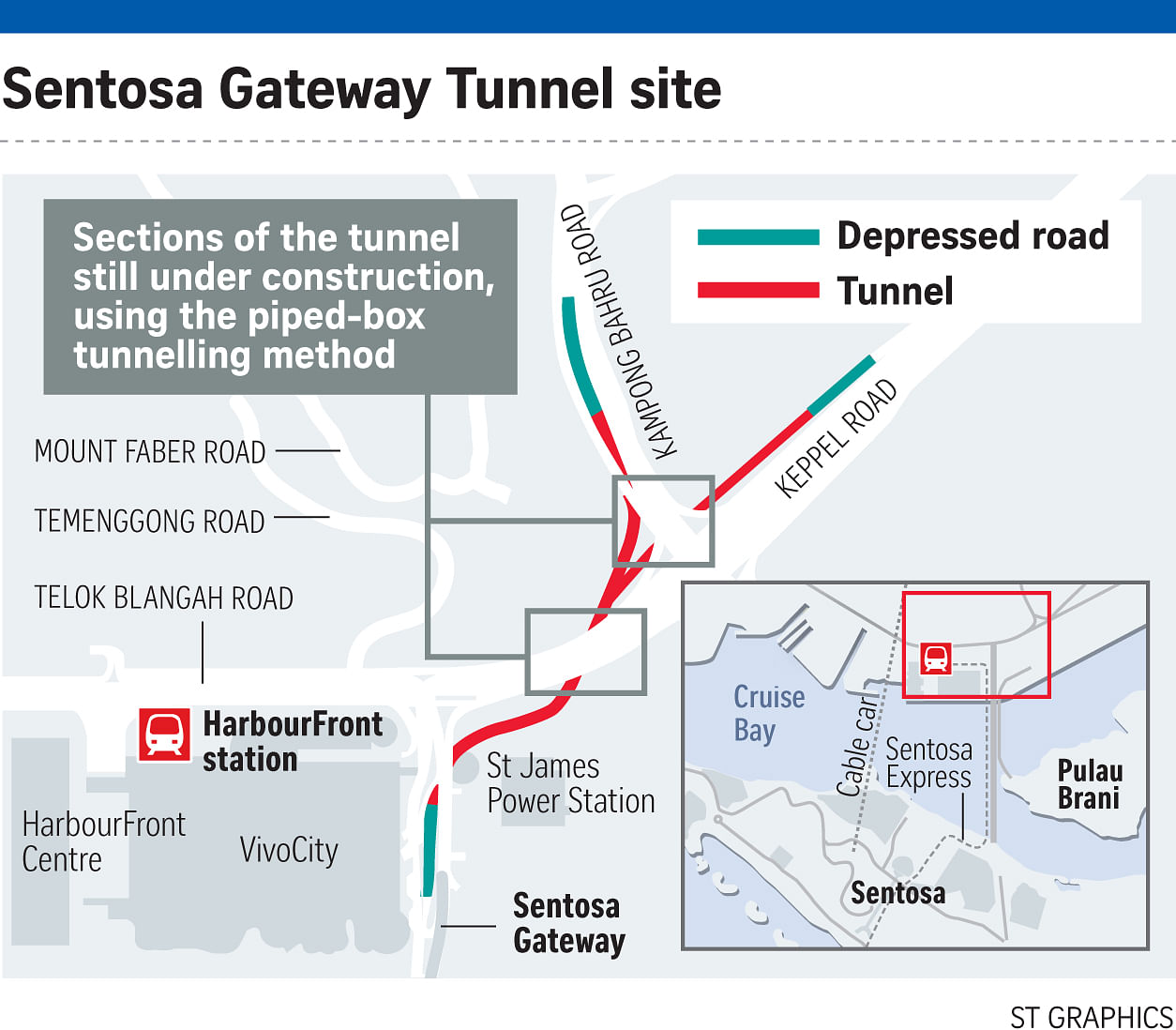The completion of the $160 million Sentosa Gateway Tunnel will be delayed by a year, it was revealed yesterday, because of site challenges requiring the contractor to use a more time-consuming tunnelling method.
Construction of the 1.4km two-lane link - which will take outbound traffic from Sentosa island directly to Lower Delta Road and Keppel Road - was due to finish by the end of this year, but this has been pushed back to the end of next year.
The Land Transport Authority (LTA) said yesterday that as of last month, close to 80 per cent of the project had been completed. Construction started in 2010.
The tunnel starts at the stretch between VivoCity and St James Power Station, and goes under Telok Blangah Road, before forking out into two single-lane roads - one connecting up onto Lower Delta Road, and the other onto Keppel Road.

The LTA said the tunnel along Sentosa Gateway and Keppel Road has been completed, but works for the final sections along Kampong Bahru Road are still going on.
LTA's principal project manager for road construction, Mr Lim Chong Teik, said: "We have a very tight construction corridor and need to ensure our works do not affect the North-East Line (NEL) MRT tunnels and foundations of the West Coast Highway viaduct."
The NEL tunnels are about 1.6m below the Sentosa Gateway Tunnel. About a metre away also lies the foundations of the West Coast Highway viaduct. Mr Lim said there are many utility services below the road and contractors have to ensure that the traffic flow along Telok Blangah Road and Kampong Bahru Road is not unduly affected.
Instead of using the conventional "cut-and-cover" method at two sites under Telok Blangah Road and Kampong Bahru Road, a "piped-box tunnel" method is being employed instead.
The cut-and-cover method involves excavation at the road level, requiring the diversion of traffic.
The piped-box tunnel method involves installing interlocking steel pipes that form the perimeter of the box tunnel. To do this, micro tunnel boring machines - about eight times smaller than the regular boring machines used for MRT tunnelling - are deployed to progressively tunnel through the ground to install one pipe at a time.
Once the tunnel box perimeter is completed, excavation takes place. This is done in stages, with the top half of the tunnel being excavated first, and a layer of concrete lining applied to stabilise the ground, before the bottom half is excavated.
Frames are later installed to support the ground above and minimise movement of the ground below. The reinforced concrete tunnel structure is built after that.
Mr Lim said piped-box tunnelling ensures that LTA's works "do not compromise the existing live transport infrastructures".
As part of the project, a dual two-lane stretch of Lower Delta Road, between Telok Blangah Rise and the Ayer-Rajah Expressway, has been widened into a dual three-lane stretch. A new right turn connecting Lower Delta Road to the Ayer Rajah Expressway, towards Marina Coastal Expressway, has also been constructed.
The Sentosa Gateway Tunnel will bypass the busy junctions at Sentosa Gateway and Telok Blangah Road, as well as Telok Blangah Road and Kampong Bahru Road.
The LTA has said previously that motorists who use the tunnel will see their travel time halve to under 10 minutes - for that stretch. Travel time on surface level will improve by 25 per cent.


